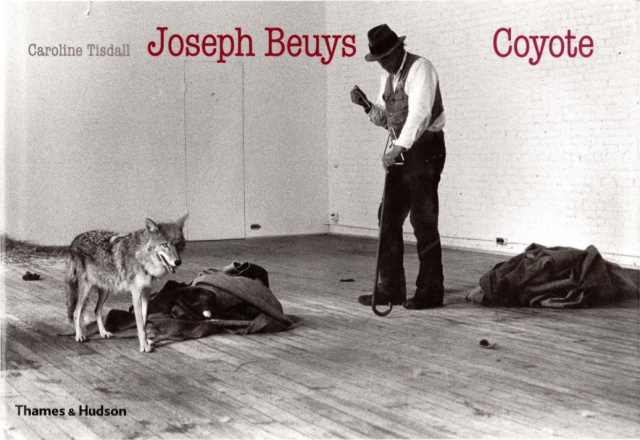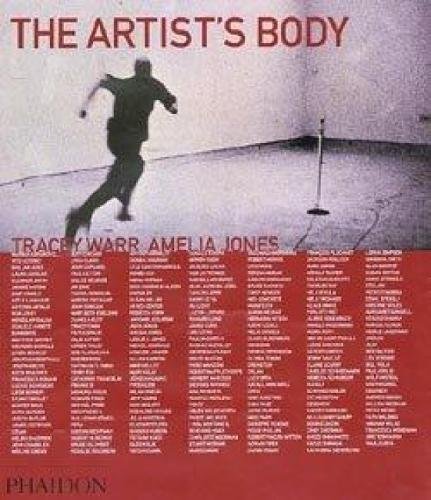Raphael Montañez Ortíz: Laser/Disc/Scratch/Destruction (2011)
Filed under brochure | Tags: · art, destruction art, experimental film, film, manifesto, performance, performance art, sculpture, sound, video, video art

An edition of documents and facsimiles of the artist published to accompany his exhibition at LABOR in México City.
In 1957 Raphael Montañez Ortíz (New York, 1934) began exhibiting sculptures and experimental films. From the start of his career he incorporated destruction and deconstruction as elements of his work, converting them into key figures for understanding the development of avant-gardes during the post-war period. In addition to producing film, music, sculpture, performance and video, Montañez Ortíz pioneered practices such as working with food, computers, and founding portable museums. His works often operate as a counter-anthropology, and he has taken ethnographic methods used to study tribal behavior and applied them to contemporary society.
The LABOR exhibition focused on two aspects of his diverse oeuvre: the first is comprised of documentation surrounding his destruction of pianos and his production of written manifestos; the second is his video work, which he began in the 1980s.
When he participated in the Destruction in Art Symposium (DIAS) held in London in 1966, Montañez Ortíz already had a reputation in the art world for destroying pianos. In the documents it is interesting to observe the contrast between the primal brutality of his actions and the elaborateness of his thoughts as recorded in his manifestos from the same era. The shock of these actions was not directed exclusively at a group of initiates, but at a larger audience that was reflected in the stupor of the mass media.
The Laser Disc Scratch Videos were the result of an interface designed especially by the artist, which allowed him, through the use of a joystick and little knobs, to control a laser disc player in real time. This instantaneous manipulation of video allowed him to work without having to cut or paste, inaugurating a totally new way of working with images without resorting to conventional processes of editing. The result is a zoom though time. Three seconds of footage are stretched out in a spastic movement that ceaselessly deconstructs and reconstructs the narrative. The effect is hypnotizing, and one might say that these videos function like a psychotropic substance absorbed through the eyes and ears. Nevertheless, the physiological effects of these pieces are just the first level among many. At the center of the vortex there is a deconstruction of cultural roles and conventions, an exorcism of the ghosts of contemporary society. (adapted from a press release for the exhibition
The volume contains an interview with Raphael Montañez Ortíz by Pedro Reyes, selections from his archive: “Destructivism: A Manifesto” (1962, handwritten manuscript + transcript, 4 pp), “Destruction Art: Survival Kit” (1968, typed manuscript, 3 pp), “D.I.A.S. Destruction in Art Symposium” (1966), “Diary of a Ritual” (1969, typed manuscript, 9 pp), and a number of photographs.
Edited by Pedro Reyes
Publisher LABOR, México City, 2011
37 pages
via L_A_B_O_R
PDF
1988 print of the Destructivism Manifesto (via ICAA Docs)
2013 Tate exhibition of the 1966 “DIAS” piano
Caroline Tisdall: Joseph Beuys: Coyote (1976–)
Filed under artist publishing | Tags: · art, performance art, photography

“Coyote was the first attempt to capture a performance by Joseph Beuys in book form. Beuys’s Action, I Like America and America Likes Me, took place in May 1974, when he spent seven days and nights in a room with a wild coyote.
The artist’s activities during his confinement with the coyote followed a repeated pattern. He employed a number of objects: felt, a walking stick, gloves, a flashlight and the Wall Street Journal – fifty copies were delivered daily. Over the period of a week, man and beast developed a mode of wordless co-existence, a two-sided performance that became rich with assumed meanings. Caroline Tisdall, a longstanding friend of the artist, who has written extensively on Beuys and has directed films about him, took most of the photographs and wrote the accompanying text.”
First published by Schirmer/Mosel, Munich, 1976
Publisher Thames & Hudson, London, 2008
ISBN 9780500543689
160 pages
via Scribd
Commentary: Jan Verwoert (e-flux, 2008).
PDF (226 MB, updated on 2019-11-23)
Comments (4)Tracey Warr (ed.): The Artist’s Body (2000)
Filed under book | Tags: · art, art history, art theory, body, body art, happening, live art, performance, performance art

“Beginning with such key artists as Marcel Duchamp and Jackson Pollock, this book examines a selection of the most significant players who have used their bodies to create their art – among them, in the 1960s Carolee Scheemann, Rudolf Schwarzkogler, Yoko Ono; in the 1970s, Chris Burden, Ana Mendieta, Vito Acconci, Marina Abramovic; up to the turn of the millennium, Matthew Barney, Marc Quinn, Tracey Emin and Mona Hatoum.
Survey. Amelia Jones, among the world experts in the field, discusses performance and body art against the background of social history. She examines the breakdown of barriers between art and life, visual and sensual experience – how artists have expanded and renewed the age-old tradition of self-portraiture, moving art out of the gallery into unexpected spaces and media.
Works. Each image is accompanied by an extended caption. The book is organized thematically:
“Painting Bodies”, concerns work that shows the trace, stain or imprint of the artist’s body in response to the paint-on-canvas tradition.
“Gesturing Bodies”, examines artists who transform the body – its acts, its gesture – into art; gesture, behaviour and situations are used in place of art objects.
“Ritualistic and Transgressive Bodies”, looks at work which uses the body to enact challenges to the social expecations of the body, often in rituals that perform a cathartic function. Mutilation and sacrifice are used to rupture personal and social homogeneity.
“Body Boundaries”, examines boundaries between the individual body and the social environment and between the inside and outside of the body itself.
“Performing Identity”, looks at issues of representation and identity.
“Absent Bodies”, explores absence and the mortality of the body through photography, casting, imprints or remnants of the body.
In “Extended and Prosthetic Bodies”, the body is extended through prosthetics or technology, to explore cyberspace and alternative states of consciousness.
Documents. Parallel to the illustrated works of art, this section combines texts by critics who shaped the movement, from Lucy R. Lippard to Thomas McEvilley. Alongside these are writings by philosophers and thinkers such as George Bataille and Gilles Deleuze who have contributed on a theoretical level to the discussion around the body – a prevalent theme in twentieth-century cultural theory.”
Edited by Tracey Warr, with a survey by Amelia Jones
Publisher Phaidon Press, London, 2000
ISBN 0714835021, 9780714835020
304 pages
Reviews: James Hall (London Review of Books, 2001), Barry Gewen (NYT, 2005).
PDF (section Works pp 48-189 missing, 52 MB, no OCR, updated on 2022-8-30)
Comments (5)
